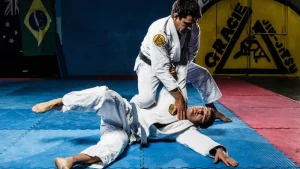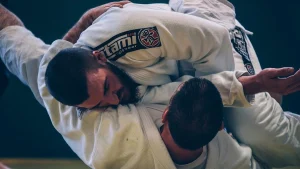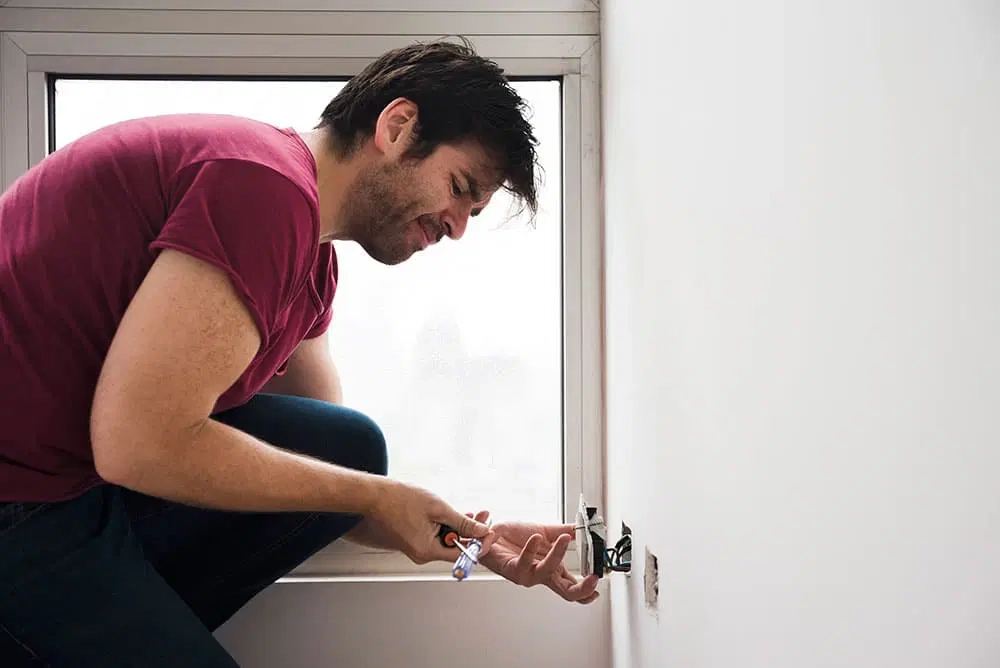Jiu Jitsu, with its origins deeply rooted in ancient Japanese martial arts, has gained recognition as a powerful self-defense system that can transform practitioners into masters of self-defense in various art forms.
This article explores how the principles and techniques of Jiu Jitsu can be applied to enhance one’s abilities in different artistic disciplines.
From its inception, Jiu Jitsu has emphasized the importance of leverage, joint locks, and throws as methods for subduing opponents. By mastering these fundamental techniques, individuals can effectively defend themselves against physical aggression and establish a sense of control over their surroundings.
Furthermore, the application of Jiu Jitsu principles extends beyond physical confrontations and can be utilized to navigate challenging situations encountered in creative pursuits such as dance or performance art.
Engaging in Jiu Jitsu not only fosters physical strength but also builds confidence and self-esteem. Through disciplined training and practice, individuals develop a heightened awareness of their bodies and capabilities, fostering a deep sense of belonging within their chosen art form.
By delving into the world of Jiu Jitsu, practitioners gain mastery over self-defense skills while simultaneously finding connection within the vast realm of artistic expression.
Key Takeaways
- Jiu Jitsu is a powerful self-defense system rooted in ancient Japanese martial arts, making it an effective tool for mastering self-defense in various art forms.
- Jiu Jitsu emphasizes leverage, joint locks, and throws to subdue opponents, providing practitioners with valuable skills in self-defense.
- Jiu Jitsu techniques can be applied in dance to enhance fluidity, balance, and agility, as well as in painting to create depth and dimension on the canvas.
- Consistent practice of Jiu Jitsu builds confidence, self-esteem, discipline, and respect for others, while also improving mental health and physical fitness levels significantly.
The Origins and Principles of Jiu Jitsu
The origins of jiu jitsu can be traced back to ancient Japan, where it was developed as a martial art by samurai warriors to defend themselves in close combat situations. Jiu jitsu’s historical development is rooted in the need for effective self-defense techniques that could be used against armed opponents.
It evolved from traditional Japanese martial arts and became known for its focus on grappling and ground fighting techniques. The philosophy and principles of jiu jitsu emphasize the use of an opponent’s strength and momentum against them, rather than relying solely on brute force. This approach allows practitioners to overcome larger and stronger opponents through leverage, technique, and strategic positioning.

By mastering these fundamental principles, individuals can become proficient in self-defense and gain a sense of empowerment in their ability to protect themselves effectively in various confrontational scenarios.
Learning Basic Jiu Jitsu Techniques
Learning the fundamental techniques of jiu jitsu allows individuals to develop a comprehensive skill set in martial arts. Jiu jitsu focuses on effective grappling techniques, which involve close-range combat and ground fighting. These techniques enable practitioners to defend themselves against larger and stronger opponents by utilizing leverage, joint locks, and chokes.
By mastering these grappling techniques, individuals can effectively neutralize an attacker’s strength and size advantage. Moreover, learning basic jiu jitsu techniques also equips individuals with self-defense strategies that can be applied in real-life situations.
Through consistent practice and dedication, students of jiu jitsu acquire the ability to assess threats quickly and respond appropriately using their knowledge of effective grappling techniques. Ultimately, acquiring these skills enhances one’s confidence and provides a sense of security in various self-defense scenarios.
Applying Jiu Jitsu in Different Art Forms
Applying the techniques of jiu jitsu in various artistic disciplines allows practitioners to explore different forms of expression and physicality.
In dance, jiu jitsu techniques can be incorporated to enhance fluidity, balance, and agility. By utilizing joint locks and throws, dancers can add dynamic movements to their performances, creating a captivating visual experience for the audience.
Similarly, applying jiu jitsu principles in painting can bring a unique perspective to the art form. The concept of leverage and using an opponent’s strength against them can be translated into brushstrokes that create depth and dimension on the canvas. Additionally, understanding body mechanics through jiu jitsu training enables artists to capture realistic figures with precision and accuracy.
Overall, incorporating jiu jitsu techniques in different art forms expands the possibilities for self-expression and adds a new layer of creativity to these disciplines.
Building Confidence and Self-Esteem through Jiu Jitsu
Developing confidence and self-esteem can be achieved through the practice of jiu jitsu for self-defense, as it allows individuals to gain a sense of accomplishment and empowerment through mastering various physical techniques.
Jiu jitsu requires dedication, discipline, and focus, which in turn contribute to improving mental health. By consistently practicing this martial art form, individuals develop a strong work ethic and learn to push past their limits. This process instills a sense of self-belief and resilience, leading to increased confidence in one’s abilities both on and off the mat.
Jiu jitsu also fosters discipline by teaching practitioners the importance of consistency, perseverance, and respect for others. The structured nature of training sessions encourages individuals to follow rules and regulations while maintaining focus on their goals. This disciplined approach not only improves technique but also translates into other areas of life where discipline is required.
Practicing jiu jitsu has numerous benefits beyond physical fitness. It builds confidence through the mastery of techniques, improves mental health by developing discipline and focus, and instills a sense of accomplishment that contributes to overall self-esteem.
Mastering Self-Defense Skills through Jiu Jitsu
Practicing jiu jitsu enables individuals to acquire a skill set that allows them to effectively protect themselves through the utilization of physical techniques. Jiu jitsu is renowned for its effective grappling techniques, which involve joint locks and chokeholds that neutralize and control an opponent. These techniques give practitioners the ability to defend themselves in close-quarters combat situations, regardless of their size or strength.
Moreover, by participating in regular jiu jitsu training sessions, individuals can enhance their physical fitness levels significantly. The rigorous nature of jiu jitsu workouts improves cardiovascular endurance, muscular strength, flexibility, and overall body coordination. This improved physical fitness not only enhances self-defense abilities but also contributes positively to overall health and well-being.
By mastering self-defense skills through jiu-jitsu practice, individuals become empowered with the knowledge and confidence necessary for personal protection in various real-life scenarios.
Conclusion
In conclusion, Jiu Jitsu is a martial art that can greatly enhance one’s self-defense skills in various art forms. With its origins and principles rooted in ancient Japanese traditions, learning basic techniques of Jiu Jitsu can provide individuals with the tools to effectively protect themselves.
By applying Jiu Jitsu in different artistic contexts, practitioners can further refine their abilities and adapt to different situations.
Moreover, the practice of Jiu Jitsu promotes confidence and self-esteem, enabling individuals to master the art of self-defense.
You May Also Like:




